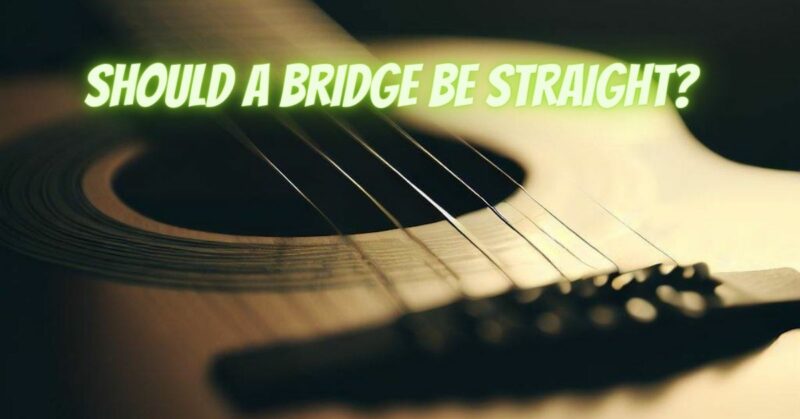The bridge of an electric guitar is a critical component that plays a significant role in shaping the instrument’s playability and sound. A common question among guitarists is whether the bridge should be straight or not. In this article, we will explore the concept of a straight bridge, its implications, and the factors to consider when deciding whether to keep your guitar’s bridge straight or not.
Understanding the Bridge of an Electric Guitar
The bridge of an electric guitar is the assembly that holds the strings and anchors them to the guitar’s body. It serves multiple functions:
- String Anchoring: The bridge anchors the strings at the body end, allowing them to maintain tension and vibrate freely.
- Intonation Adjustment: Many electric guitar bridges have individual saddle adjustments to set the intonation, ensuring that each string plays in tune along the entire fretboard.
- Action Adjustment: The height of the bridge saddles can be adjusted to control the string action (the distance between the strings and the frets). This affects playability and string bending ease.
Should the Bridge Be Straight?
When guitarists refer to a “straight bridge,” they usually mean that the bridge should sit parallel to the guitar body, creating an even string height across all strings. However, whether the bridge should be straight or not depends on several factors:
- Playing Style: Your preferred playing style and technique influence the bridge setup. Some players like a straight bridge for precise fretting and easy bending, while others prefer a slightly angled bridge for a more vintage feel.
- String Gauge: The gauge of your strings affects the tension and action. Heavier gauges generally require higher tension and might benefit from a straighter bridge, while lighter strings might allow for a slightly angled bridge.
- Tremolo Systems: Electric guitars with tremolo systems (e.g., Stratocaster or Floyd Rose) often have floating bridges, allowing pitch modulation. In these cases, a straight bridge isn’t practical, and some degree of tilt is necessary.
- Personal Preference: Ultimately, the bridge setup is a matter of personal preference. Some guitarists find a straight bridge more comfortable, while others prefer a slight tilt to accommodate their playing style.
Factors to Consider
- String Action: Your string action is a crucial consideration. The ideal action height depends on your playing style and comfort. Adjusting the bridge height can help you achieve the desired action.
- Intonation: Maintaining proper intonation is essential for playing in tune across the fretboard. Adjust your saddle positions to ensure accurate intonation.
- Tremolo Systems: If your guitar has a tremolo system and you use it frequently, a perfectly straight bridge isn’t practical. Some degree of tilt will allow for pitch modulation.
- Experimentation: Don’t be afraid to experiment with different bridge setups. Try various bridge angles and string gauges to find what suits your playing style and tone preferences best.
Whether the bridge of an electric guitar should be straight or not depends on various factors, including your playing style, string gauge, tremolo system, and personal preference. There is no one-size-fits-all answer, as each guitarist has unique requirements and tonal goals. The key is to find a bridge setup that allows you to play comfortably, achieve the desired tone, and maintain proper intonation and action height. Experimentation and fine-tuning are essential to discovering the perfect bridge setup for your playing style.


